
I’ve said it before and I’ll say it again – the best trousers are the ones you don’t notice. Never is this truer than with hardshells pants for use in the mountains because a lack of breathability, poorly thought out pockets and misplaced zips can become a real pain. Get it right, on the other hand and you barely notice what you’ve got on your legs.
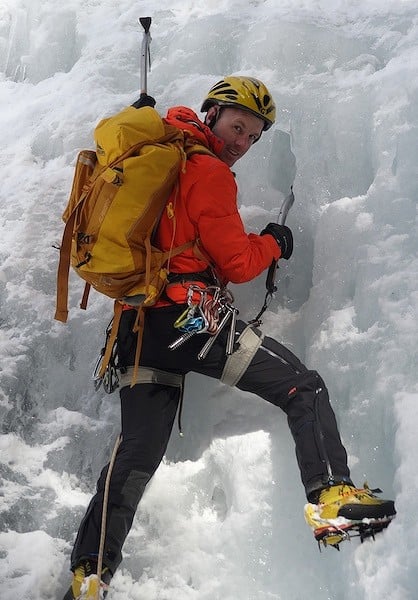
The choice of hardshell pants currently available is nothing short of bewildering so for this test we stuck to mid weight, versatile pants designed for wearing all day (as opposed to “emergency” hardshells). Even within that relatively small category there is plenty of wiggle room, but having taken all of the trousers here out for several days each, they all seem reasonably close to each other in performance and use.
Some are better for Alpine mountaineering, others for ski mountaineering and some for Scottish winter, but in all cases the basic requirements are that they fit well, have appropriate and well designed features, are able to breathe / be vented when the going gets hot and they keep you dry when needed. Surely that’s not too much to ask…?
I've had a wide range of different pants from several top brands, and I have put them through their paces this winter.
Here's a summary table to tell you the basics:
|
Model |
Price | Weight | Comfort / Fit | Breathability | Durability | Summary |
|
Arc'teryx Theta SV Bib |
£390 | 680g |
Extremely solid and tough. A great choice for brutal conditions. |
|||
|
Bergahus Antelao |
£270 | 622g |
Excellent all-rounder. Good balance between breathability, warmth and function. |
|||
|
Mammut Nordwand Pro |
£460 | 610g |
A pricey option but they offer superb performance and a bombproof feel. |
|||
|
Marmot Spire |
£250 | 708g |
An excellent ski pant and one of the best value options, just make sure they fit. |
|||
|
Mountain Equipment Tupilak |
£300 | 585g |
Supremely comfy, no frills tough climbing shell. |
|||
|
The North Face Kitchatna Bib |
£320 | 640g |
Lightweight given the warmth they offer. A good choice for being on the move in cold temperatures. |
|||
|
Rab Stretch Neo |
£210 | 454g |
A go anywhere (unless you have skis on) option and light enough to be an emergency piece of kit. |
Arcteryx Theta SV Bib
The Theta SV are marketed as a “all-round mountain apparel”, and the SV stands for “Severe weather”, so they’ve got a lot to live up to! Fortunately they manage it, although they are definitely better suited to the more hardcore end of mountain activities rather than being an all rounder for every day of the year.
Made from Gore-Tex Pro, the Theta have reinforcements on the knees, lower leg and seat and the overall feel is that they are tough. They are extremely simple too, adding to the feeling that these are pants for putting on when you’re going out to battle the elements rather than faff about with zips, pockets and buttons in the sunshine.
The only pockets are two tiny, water resistant ones high on the bib. I’m not entirely sure what they are for because they are so small that you can only fit in a credit card and a bit of money – you can forget about getting your iphone in. Personally I’d like to have the option to store slightly more. Otherwise there are excellent full length zips, small and unobtrusive suspenders, some tough feeling elasticated snow gaiters and….that’s it. Nice and simple.
Fit wise they are a nice cut, and neither too tight nor too baggy – just right for the mountains. They have a built in elasticated waist band which really helps the fit and means that you can fold the bib down when you get a bit warm and the pants stay up. I found that they rode up slightly when bootpacking though and I felt that they could have done with a bit more space around the backside, but otherwise the fit is good.
Overall, a very durable, no frills option for those grim days when you just need no nonsense, functional gear. Thumbs up.

© Charlie Boscoe |
Berghaus Antelao
Designed to be a versatile, go anywhere pant, the Antelao are advertised as being for “mountain adventures” on the Berghaus website, so I figured that I should put them through their paces on all fronts! First impressions are positive, with them being a comfortable but not baggy fit and with just the right amount of features. There’s full length two-way zips, removable snow gaiters and three pockets – two hand pockets and one on the right thigh. Comfort wise it’s all simple but effective stuff – articulated knees, removable braces and something called “side elastication” (answers on a postcard).
So they seemed good in the house, what about on the mountain? Well, it’s pretty much a universal thumbs up. They don’t come up quite as high on the torso as some of the other brands but I didn’t find that this was a problem and it was actually preferable when working hard on the uphill as I didn’t get too hot. The zips work really too and one added bonus is that you can quickly undo a button at the top of each leg, whip the zips down and go to the loo. Not a game changer but these were definitely the best of the pants I tested for going for a number two which, let’s face it, you just have to do sometimes.
When it came to pockets, I thought Bergahus got it spot on – decent, deep hand pockets big enough to take a camera, phone, keys, whatever you want to put in there, and the thigh pocket is massive too and easily big enough for a transceiver. It’s also in a really good spot as it is too low to be blocked by a harness but high enough that you can’t knock it with your knee.
Performance wise I thought the Antelao were excellent too. When I climbed in them I found that the ankles fit reasonably snugly around a climbing boot but they’re definitely on the baggy side and fit around a ski boot better.
Nice work Berghaus, these were brilliant.
Mammut Nordwand Pro.
Let’s be straight here, Mammut kit doesn’t come cheap but in my opinion you get what you pay for. It is generally well thought out, highly effective and incredibly durable. As if that wasn’t enough, the Nordwand Pros are sold as being suitable “for the extreme use in high alpine terrain”. No pressure…
As is often the case when you pick up Mammut gear, the quality is immediately obvious (but then it should be for £460) and the overall feel is of a sturdy and tough piece of kit. Mammut have made the Nordwand Pro out of Gore-Tex Pro (hence the name I guess) and then reinforced the hem and crampon protection areas with Schoeller Keprotec. The fit is excellent too, although slightly on the tight side, which should prevent snagging without compromising movement. There’s also a simple but very effective tightening system on the elasticated waistband and then two Velcro straps at the calf and ankle which mean you can really fine tune the fit.
In terms of features, the zips are termed “3/4 length” on the Mammut website but they actually only start about 15cm below the waistband, so I’d call them 9/10 length. It doesn’t have the quite same ring, admittedly, but suffice to say that I found they allow pretty much the same amount of air in as full length zips do. Elsewhere there’s detachable braces, snow gaiters and three pockets – two hand pockets and one on the thigh with a really effective and unique volume pleats and over flap, which make the pocket both bigger than it initially looks and completely waterproof even in blowing snow.
Overall I thought that the Nordwand Pro were one of the best pieces of kit that I’ve tried for a long time. I haven’t had them long enough to really hammer them over a long period of time but they are showing no sign of wear whatsoever after the days I’ve used them and I suspect that’s not going to change for a while. The snug fit means that I’d see these more as an option for alpinism and mixed climbing than for skiing but they’re certainly fine for touring. As for the price, 460 quid is a lot more than anything else costs in this test but quality isn’t cheap.
Marmot Spire
The first thing you notice about these is the colour. They’d probably have some of the stuffier members of the alpine club spitting out their port in disgust, but bright colours have practical advantages in the mountains and I also think it’s good to get away from the British alpinist look of black, black and more black, so it’s a yes from me on the style front. The Spire are designed as a ski pant primarily and they don’t so much cover a ski boot as swallow it, which I really like. There’s no danger of any snow creeping into them either as they have an effective (and removable) snow gaiter built in.
In practical terms, these are pretty simple pants, built from three-layer Gore-Tex and with a few nice, simple features. There are three pockets – two hand pockets and one at the back – all with water resistant zippers. The side zips are excellent and go the full length of the pants, meaning that you can really regulate the amount of air coming in. The removal and adjustable bib suspenders work really well too, and make the Spire much more versatile. For example, if you're walking into a route or skinning uphill and really getting warm, you can remove the suspenders (and open the huge leg zips) to keep cooler, and then stick them back on when you need a bit more warmth and support.
The one issue I had with the Spire was the cut. They are a “relaxed” fit (industry speak for slightly baggy) which I like but they are really tight around the hips and crotch. The waist area is comfy enough, but the part which houses your most delicate body parts didn’t work for me and I found that they rode up. Technical speak is all well and good but I’m basically trying to say that they gave me a wedgie if I walked up a steep incline. I lent them to a friend of mine just to check that the poor fit wasn’t down to me eating too much at Christmas and he agreed that they are a strange shape. Happily people come in all shapes and sizes so if they fit you, these are great for all types of skiing and ski mountaineering, and would also make a good option for trekking.
Mountain Equipment Tupilak
Possibly the most cool looking pants in this test, the Mountain Equipment Tupilak are a climbing pant through and through. I both climbed and skied in them but they are definitely best for going up, and the more technical the terrain, the better. They are light, virtually devoid of faff and extremely durable.
The Tupilak follow from on the excellent and popular Changabang pants which are a real Mountain Equipment classic. They're made from three-layer Gore-Tex Pro, and with reinforcements around the inside of the ankles, the knees, backside and the back of the hips. This final piece of reinforcement really tells you much about these pants, because only a true climbing pant has reinforcement to protect you from ice screws cutting your trousers whilst hanging on your harness. With hindsight, I wonder why I ever climbed in pants that didn’t have this feature because I’ve shredded several bits of gear on wayward ice screws. A really impressive example of a feature that has been thought out and tested by real climbers. The other features are limited to full length zips (made of Mountain Equipment’s YKK Aquaguard zip system which is both tough and easy to use with gloves on), removable bib suspenders and snow gaiters, and a “pull-aside seat”. In layman’s terms this means that you can unzip the top of the 2 side zips, pull aside the fabric covering your backside and do your business. The one feature that I felt was missing is a pocket or two. I don’t want to keep much in my trousers but maybe a small pocket for a phone and a bite to eat would be good and wouldn’t detract from the lightweight and simple feel.
Often you can really like kit when you try it on at home but not so much in the mountains but I loved the Tupilaks everywhere I took them. They feel totally solid, breathe well and the fit was spot on for me. I skied in them a lot and they were fine but they really excelled for climbing and mountaineering and I’d imagine they would be a superb Scottish winter pant, especially given the horrific weather up there so far this season. Tough, functional, simple and stylish. What’s not to like?
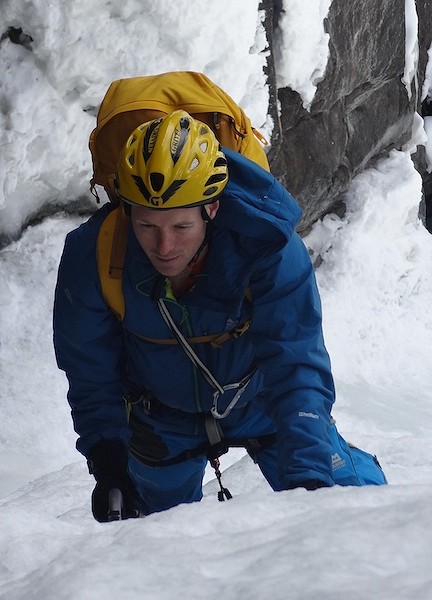
© Charlie Boscoe |
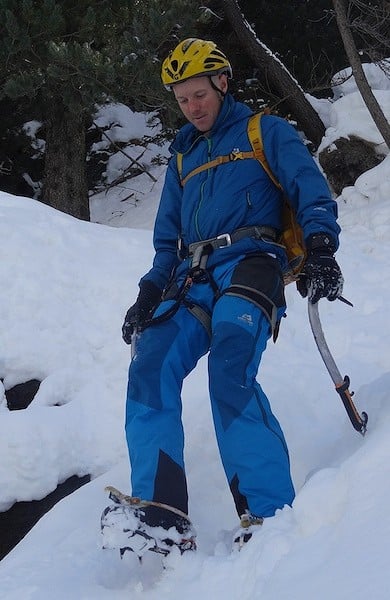
© Charley Radcliffe |
The North Face Kitchatna
One of the latest offerings from The North Face’s hugely successful Summit Series, the Kitchatna are fairly reminiscent of the excellent Meru bibs that I reviewed a couple of years back, mainly due to the colour. In reality, these are more ski mountaineering orientated than the Meru but I felt that they made a decent climbing pant too, especially in Scotland.
Unlike many of the pants on this list, the Kitchatna aren’t reinforced on the knees and backside (although they do have kickpatches to keep the inside of the ankles safer from crampons) so they are very much a pant aimed to keep you dry going both up and downhill. They’re light too, especially given that the bib comes up much higher on the torso than any of the other pants and therefore uses more material than its competitors. They are also pretty basic and further weight is saved by removing some popular features such as removable snow gaiters. There are snow gaiters but you can’t take them off (I’ve never really understood why you would anyway). In terms of pockets, there’s a small one high on the bib and a decent one on each thigh, big enough to store a transceiver (I prefer to store my transceiver in a zip pocket in my pants rather than using the chest straps they come with). The other really nice feature is the bib itself, which is made of a lovely soft material, a much comfier and snuger option than just extending the Gore-Tex up the torso. The whole pant is also lined with a specially designed inner lining to improve durability and reduce wear and tear.
I have to say that I was initially slightly skeptical about the Kilchatna as I thought that they might not be as tough as the other options and that they might be too warm for going uphill. I’ve been proved wrong though and they seem pretty durable and the high bib folds down without the pants falling down when you get too hot. They’re a reasonably tight fit but for what they are designed for, that’s ideal. Overall, a lightweight and versatile option with enough features but no faff.
Rab Stretch Neo
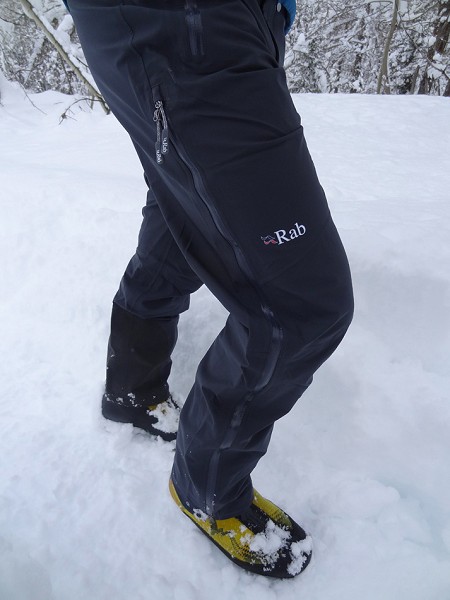
The first impression of the Stretch Neo is the softness of the fabric used. Rab have made the pants out of Polartec Neoshell and it is noticeably softer (and thinner) than anything else I looked at. There’s no doubt that the Stretch Neo are still up to the job of protecting you though, as all the zips are fully water resistant and the kick patches on the ankles are Cordura. The ¾ length side zips come with storm flaps too, so Rab haven’t simply stripped some pants down in order to save weight – they’ve got the basic features in whilst also keeping things light.
So far, so good. The first day I took the Stretch Neo out was on an ice climbing day and they were frankly superb. Supremely comfy, a snug fit but without restricting movement or giving me a wedgie, I loved them. They also breathed well and the ¾ length zip was plenty to get air in for the approach.
Next up was skiing and this is where the Stretch Neo fell down. The two hand pockets are good (and big enough for my transceiver) but the bottom of the pants is too narrow to get over a ski boot. For climbing it’s good to have a thin cut around the ankle but for skiing the bare minimum is to get over a boot and the Stretch Neo weren’t even close. They fit me otherwise so it isn’t a fit issue and they were great otherwise, with the elasticated waist band meaning that I didn’t miss shoulder straps.
Still, despite not quite being the all rounder that they initially seem, these really are superb lightweight and comfortable climbing and mountaineering trousers. They’re also light enough that you could chuck them in for a “just in case” option, so it’s a big thumbs up for everything but skiing.









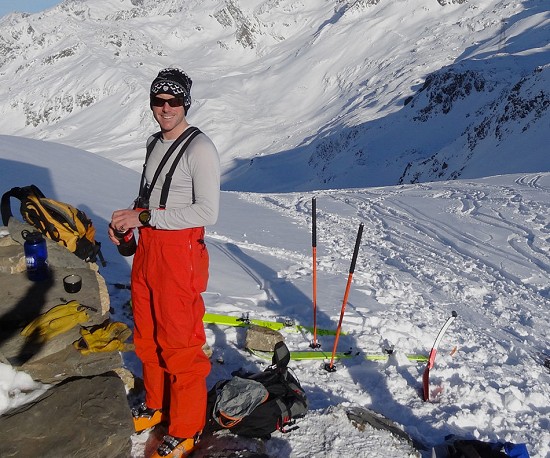

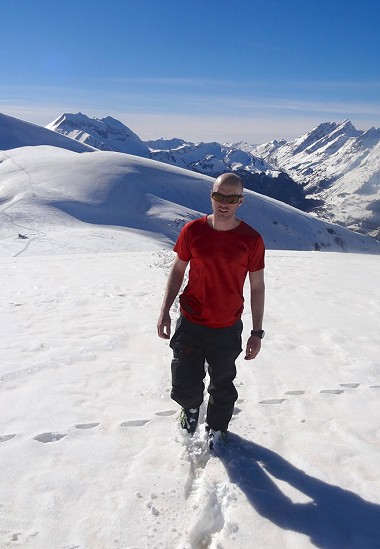
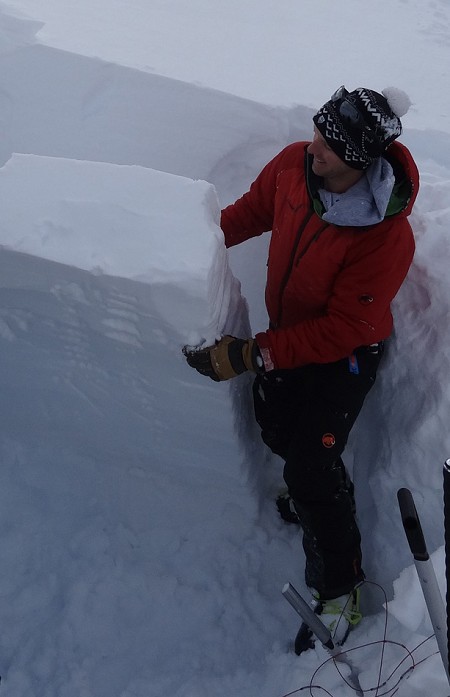
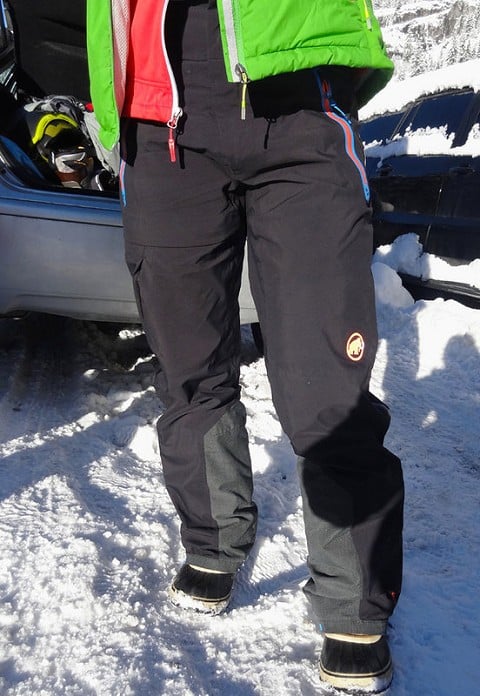
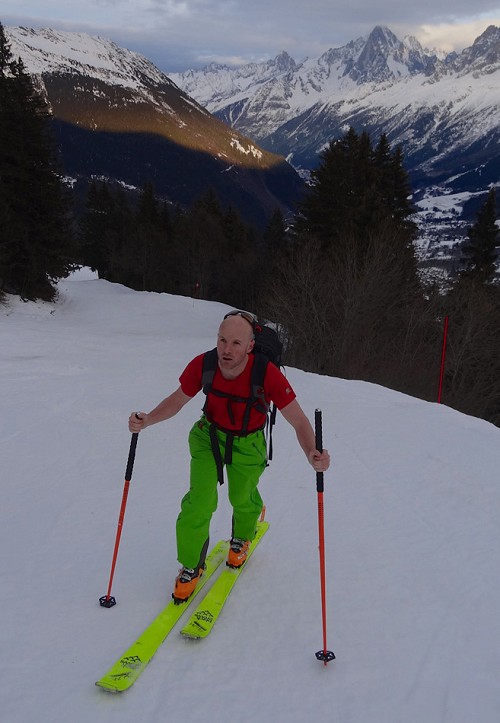
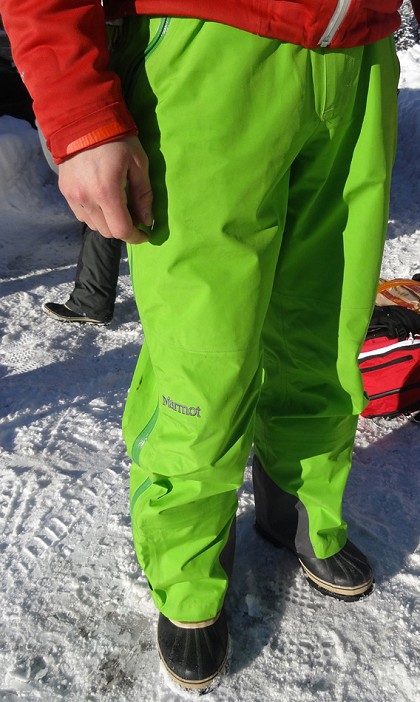

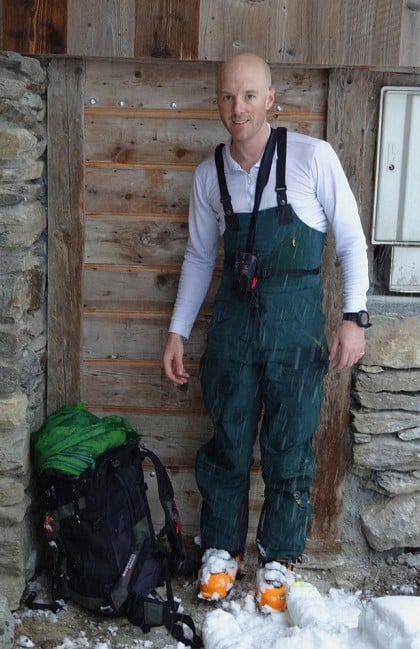
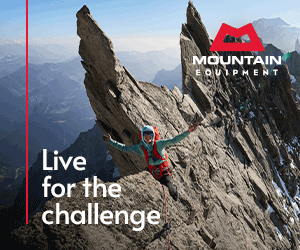







Comments